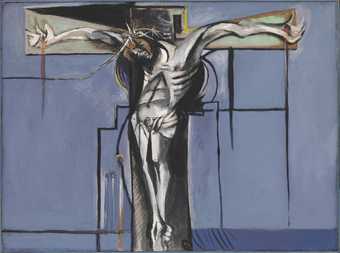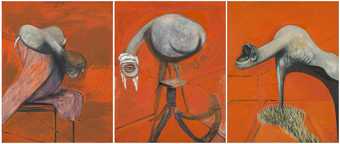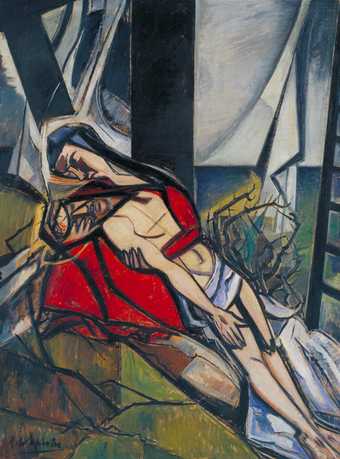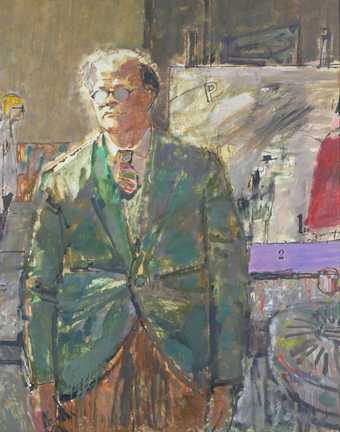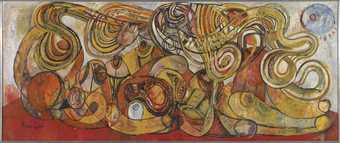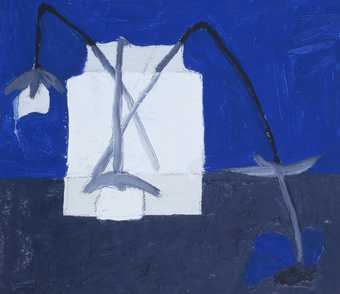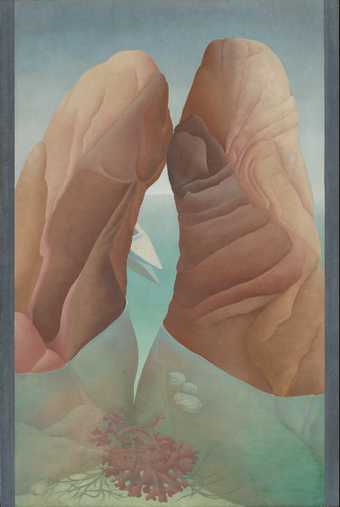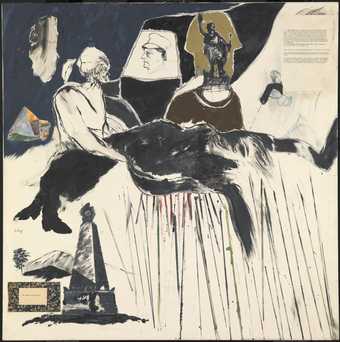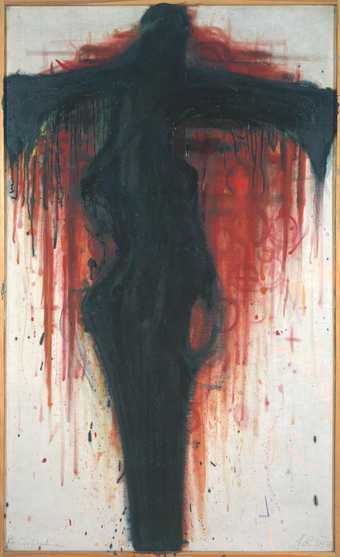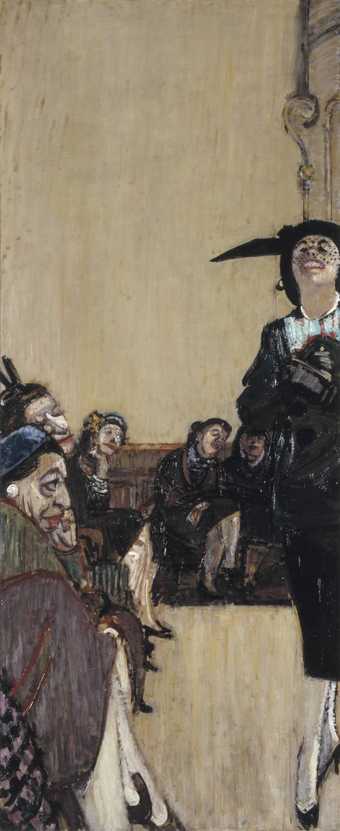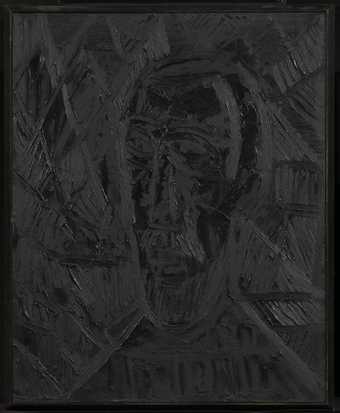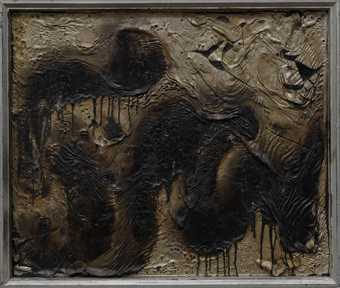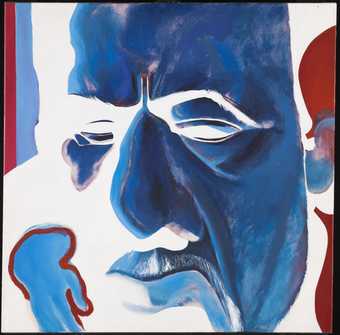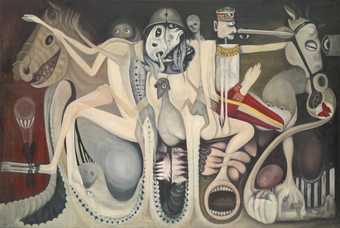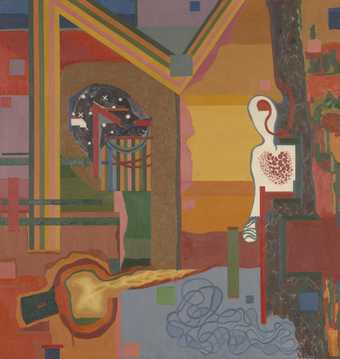
In Tate Britain
- Artist
- F.N. Souza 1924–2002
- Medium
- Oil paint on board
- Dimensions
- Support: 1831 × 1220 mm
frame: 1952 × 1341 × 65 mm - Collection
- Tate
- Acquisition
- Purchased 1993
- Reference
- T06776
Summary
Francis Newton Souza, born in the Portuguese colony of Goa to Indian parents, was brought up as a strict Catholic. In 1949, having become a well-established artist in India, he moved to Britain. After six difficult years living in London, he began to build a considerable reputation as a writer and painter.
This painting, which is one of several religious pictures by Souza, refutes the 'blond operatic Christs and flaxen-haired shy Virgins'(Souza, p.8) he had been encouraged to admire at the Jesuit school he went to in Bombay. Instead it emulates 'the impaled image of a Man supposed to be the Son of God, scourged and dripping, with matted hair tangled in plaited thorns' (Souza, p.9) he saw hanging over the altars of the Catholic churches he attended.
While the depiction of Christ and the other figures as black represents a significant departure from the western canon, such critics as Edwin Mullins and David Sylvester compared the expressionist vernacular of Souza's work with that of Graham Sutherland (1903-80) and Francis Bacon (1909-92), both of whom had depicted religious subject matter in a similarly brutal style shortly after the Second World War. Indeed, Sutherland painted several crucifixions in the postwar period which referred directly to the Isenheim Altarpiece, 1515 (Unterlinden Museum, Colmar, France) by the German Renaissance painter Matthias Grunewald (c1475-1528), among them Crucifixion, 1946 (Tate N05774). Comparisons were also made to Pablo Picasso's (1881-1973) work of the late 1930s and the 1940s, though the distorted faces in Crucifixion may equally be compared to those of Les Demoiselles d'Avignon, 1907 (Museum of Modern Art, New York).
Mullins described Souza's vision of divine power as of 'a God, who is not a God of gentleness and love, but rather of suffering, vengeance and terrible anger' (Mullins, p.40). The tortured figure of Christ and the grotesquely deformed characters on either side of him, who according to Souza may be St John and a disciple, testify to this reading of his religious imagery.
Further reading
F.N.Souza, Words & Lines, London 1959
Edwin Mullins, Souza, London 1962, reproduced p.40, pl.3 (colour)
Toby Treves
September 2000
Does this text contain inaccurate information or language that you feel we should improve or change? We would like to hear from you.
Display caption
At the heart of Souza’s Crucifixion is the body of Christ transformed through suffering. Souza was born in the Catholic province of Goa in western India. In the 1950s, he was among the first of the post-Independence generation of Indian artists to establish a career in Britain. His depiction of the agonised black Christ addresses his own feelings of religious conflict, as well as cultural tensions between black and white, Christian and non-Christian, colonised and colonising societies.
Gallery label, September 2016
Does this text contain inaccurate information or language that you feel we should improve or change? We would like to hear from you.
Film and audio
Explore
- abstraction(8,615)
-
- from recognisable sources(3,634)
-
- figure(2,270)
- emotions and human qualities(5,345)
-
- suffering(161)
- pain(95)
- Bible: New Testament(545)
-
- Christ(281)
- Crucifixion(84)
- social comment(6,584)
-
- race(381)
You might like
-
Graham Sutherland OM Crucifixion
1946 -
Francis Bacon Three Studies for Figures at the Base of a Crucifixion
1944 -
Roy De Maistre Pieta
1950 -
Ruskin Spear Professor Carel Weight
1961 -
Avinash Chandra Hills of Gold
1964 -
Margaret Mellis Blue Anemone
1957 -
Ithell Colquhoun Scylla
1938 -
R.B. Kitaj The Murder of Rosa Luxemburg
1960 -
Arnulf Rainer Wine Crucifix
1957–78 -
Ruskin Spear Haute Couture
1954 -
F.N. Souza Head of a Man
1965 -
Hamed Abdalla Defeat
1963 -
David Oxtoby Mingus Deep Blues
1963 -
Kikuji Yamashita Deification of a Soldier
1967 -
Vivan Sundaram May 68
1968

